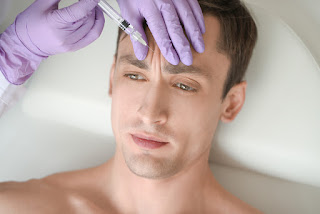Title: Understanding the Factors Affecting Hair Transplant Cost
Introduction
Hair loss can be a distressing experience for many individuals, leading them to consider hair transplant procedures as a permanent solution. However, before undergoing a hair transplant, it's crucial to understand the factors that influence the cost of the procedure. By gaining insight into these factors, individuals can make informed decisions regarding their treatment options and budget accordingly.
1. Technique Used: FUE vs. FUT
One of the primary factors that impact the cost of a hair transplant is the technique employed. Follicular Unit Extraction (FUE) and Follicular Unit Transplantation (FUT) are the two most commonly used methods. FUE involves the extraction of individual hair follicles, resulting in minimal scarring and faster recovery. On the other hand, FUT involves the removal of a strip of tissue from the donor area, which requires sutures and may result in a linear scar. FUE is generally more expensive than FUT due to the meticulous nature of the procedure.
2. Degree of Hair Loss
The extent of hair loss plays a significant role in determining the cost of a hair transplant. Individuals with advanced hair loss often require more grafts to achieve satisfactory results. Consequently, more extensive procedures with a higher number of grafts will generally be more expensive than those with lesser grafts.
3. Clinic Reputation and Surgeon Experience
The reputation and experience of the hair transplant clinic and surgeon also influence the cost of the procedure. Highly reputable clinics with experienced surgeons who have a track record of successful results often charge higher fees. The expertise and skills of the surgeon can significantly impact the outcome of the procedure, making it a worthwhile investment for many individuals.
4. Geographic Location
The geographic location of the hair transplant clinic can have an impact on the cost. The cost of living, overhead expenses, and market competition in a particular area can affect the pricing of hair transplant procedures. Metropolitan areas and regions with high demand for hair restoration services generally have higher costs compared to less populated areas.
5. Pre- and Post-Operative Care
The overall cost of a hair transplant procedure includes pre- and post-operative care. Pre-operative consultations, medical evaluations, and diagnostic tests are essential to ensure the suitability of the procedure for the individual. Post-operative care, including medications, follow-up appointments, and potential touch-up procedures, are also considerations that contribute to the total cost.
6. Additional Services and Technologies
Some hair transplant clinics may offer additional services or advanced technologies that can influence the cost. For example, clinics that provide platelet-rich plasma (PRP) therapy alongside the transplant procedure may charge higher fees. PRP is believed to enhance the healing process and stimulate hair growth. Similarly, clinics that utilize robotic or automated hair transplantation systems may have higher costs associated with the use of such technologies.
Conclusion
Understanding the factors that affect hair transplant cost is essential for individuals considering this procedure. By evaluating factors such as the technique used, degree of hair loss, clinic reputation, geographic location, pre- and post-operative care, and additional services, individuals can make informed decisions about their treatment options. It's important to remember that the cost should not be the sole determining factor when choosing a hair transplant provider. Quality, experience, and long-term results should also be taken into consideration. Consulting with a reputable hair transplant specialist can provide further guidance and help individuals determine the most suitable and cost-effective approach to address their hair loss concerns.
For more information, visit Enfield Royal Clinic Islamabad.




Comments
Post a Comment